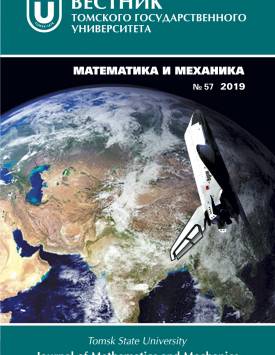The effect of approximating functions in the construction of the stiffness matrix of the finite element on the convergence rate of the finite element method
The aim of this article is to study the influence of approximating functions on the convergence rate of the finite element method (FEM) when constructing the finite element stiffness matrix. To achieve this aim, coefficients of the transformation tensor have been obtained for different approximating functions with the use of one-dimensional Lagrange polynomials which are used for constructing the stiffness matrix of a finite element (linear, quadratic, and cubic). The found coefficients of the transformation tensor are used in the calculation of internal and external radial displacements in a hollow thick-walled resin cylinder under internal pressure. The analysis of the FEM convergence with linear, quadratic, and cubic approximation functions of displacements for the performed calculations shows that the use of a finite element with an approximating cubic function makes it possible to accelerate the FEM convergence and to obtain more accurate results. This fact proves the perspectiveness of using higher order approximating functions for different classes of problems in mechanics (in our case, for the elastomeric element). AMS Mathematical Subject Classification 74G15, 74S05, 65B99
Keywords
кубическая аппроксимация, эластомеры, напряженно-деформированное состояние, метод конечных элементовAuthors
| Name | Organization | |
| Kirichevsky Rostislav V. | Luhansk Taras Shevchenko National University | rost71@mail.ru |
| Skrynnykova Anna V. | Luhansk Taras Shevchenko National University | ann3005@rambler.ru |
References

The effect of approximating functions in the construction of the stiffness matrix of the finite element on the convergence rate of the finite element method | Vestnik Tomskogo gosudarstvennogo universiteta. Matematika i mekhanika – Tomsk State University Journal of Mathematics and Mechanics. 2019. № 57. DOI: 10.17223/19988621/57/2
